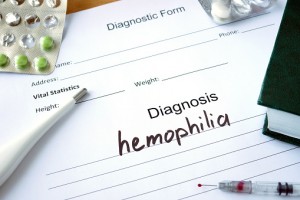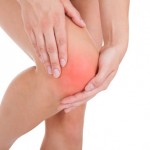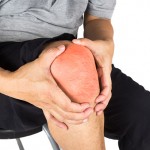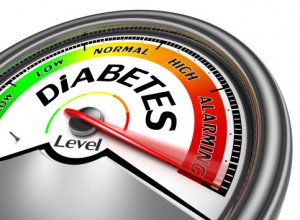Hemophilia increases risk of joint diseases, bleeding into joints
 Hemophilia, a disorder that makes it difficult for the body to control blood clotting, can increase the risk of joint diseases and bleeding into joints.
Hemophilia, a disorder that makes it difficult for the body to control blood clotting, can increase the risk of joint diseases and bleeding into joints.
For some time now, doctors who treat people with hemophilia have noticed that adults with severe cases of the blood clotting disorder experience joint diseases. They say this is happening due to repeated bleeding in the joints. What is particularly upsetting is that in some cases the damage that can take place after a hemophilia joint bleed can be permanent.
About 20,000 American men have hemophilia. While women can get the disorder, it is rare in the female population. Right now there is no cure for hemophilia. Hemophilia and joint pain can make life miserable for some sufferers.
Hemophilia and joint damage
 Hemophilia with joint damage is much the same as joint damage experienced by people who suffer from arthritis. The hemophilia joint damage happens in the cartilage and the synovium around the bones. The snynovium is a lining that lubricates the joint, as well as removing debris from the joint. There are blood vessels in the synovium, so that’s why bleeding into joints is common in people who have this disorder.
Hemophilia with joint damage is much the same as joint damage experienced by people who suffer from arthritis. The hemophilia joint damage happens in the cartilage and the synovium around the bones. The snynovium is a lining that lubricates the joint, as well as removing debris from the joint. There are blood vessels in the synovium, so that’s why bleeding into joints is common in people who have this disorder.
When there is blood in the joint, the snynovium tends to absorb it. Since blood has iron in it, the lining gets thicker. As the synovium thickens, it contains more blood vessels. Scientists believe it causes more bleeding as a result.
During bleeding, enzymes from the snynovium, which is swollen, start to destroy cartilage around the bones. As a result, you can get bone rubbing on bone, which can be very painful. As joint bleeding continues, movement may become restricted in a particular area.
Signs that you have a joint bleed
Joint bleeds are most common in the shoulders, fingers, wrists, knees, hips and toes. When the joint fills up with blood you can experience pain, but there are other signs you could be experiencing a hemophilia joint bleed. It is best to address the early signs before they progress to a more severe level.
Here are some examples of early signs:
- You have an “aura”
- Bubbling or tingling feeling in the joint
- Joint feels warm inside
The following are later signs of a joint bleed:
- Joint stiffness
- Joint swelling
- Skin over joint feels warm
- Joint is painful
- Difficulty moving joint
- A child won’t straighten, put weight on, or use his/her arm or leg
How does joint damage affect a hemophiliac?
 Hemophilia joint damage can be a challenge to deal with. It can certainly have an impact on daily activity. The joint damage can cause bleeding in the same joint over and over again, as well as loss of motion in the joint. In some cases, people still maintain range of motion yet experience a loss of strength in the muscles around the joint. Of course, pain is common when using the joint, but it can also be present when the joint is in a resting position.
Hemophilia joint damage can be a challenge to deal with. It can certainly have an impact on daily activity. The joint damage can cause bleeding in the same joint over and over again, as well as loss of motion in the joint. In some cases, people still maintain range of motion yet experience a loss of strength in the muscles around the joint. Of course, pain is common when using the joint, but it can also be present when the joint is in a resting position.
When a hemophiliac has joint damage in the knee or ankle they can also have difficulty running, dancing or riding a bike. In severe cases, walking without pain is impossible. For some people, doing tasks like carrying heavy loads, kneeling, getting up and down stairs, or getting in and out of the car can be much harder.
For those who suffer joint damage in their elbows, something as simple as getting dressed, using a fork and knife to eat, or writing can be painful exercises.
Treating damaged joints in hemophilia
Hemophilia disease treatment is based on the severity of the condition and on the type of joint damage that a patient may have. In some situations orthopedic approaches can help manage pain and improve a person’s function so they can get on with their daily activities. However, in other cases, especially where repeated bleeding takes place, procedures called synovectomy can be performed. Synovectomy is conducted three different ways: two are through injection-like procedures and one is surgical. It requires the joint to be opened up and the synovium to be removed.
Joint replacement is also a way to treat damaged joints in hemophilia. Knees and hips are the most common replacement.
Preventing hemophilia and joint pain with exercise and nutrition
 You can prevent hemophilia joint problems with exercise and good nutrition. Studies have long demonstrated that strong muscles help to support our joints, so a regular exercise routine is a good measure to take against joint pain. Physical fitness has also been shown to decrease the number of spontaneous bleeds. Steady exercise on a weekly basis can help people to maintain range of motion.
You can prevent hemophilia joint problems with exercise and good nutrition. Studies have long demonstrated that strong muscles help to support our joints, so a regular exercise routine is a good measure to take against joint pain. Physical fitness has also been shown to decrease the number of spontaneous bleeds. Steady exercise on a weekly basis can help people to maintain range of motion.
It’s important to retain a healthy weight. Excess weight can put a lot of pressure on joints. The U.S. Department of Agriculture suggests a diet rich in whole grains, fresh fruits and vegetables and low in fats, added sugars and salt.
Since medications and supplements can interfere with blood flow, it is very important that you discuss taking anything with your doctor first.
A person with hemophilia will have the condition for life, but over the years as we have learned more about the disorder and how to manage it, more people with the blood clotting and joint pain have reported living a more engaging life. It is not easy, but keeping track of symptoms, regularly visiting the doctor, maintaining a healthy lifestyle, and being surrounded by supportive family and friends, can make coping with the disorder easier.
Crohn’s disease, IBD are risk factors for arthritis and joint pain
Arthritis has been seen in individuals with IBD, similar to that of rheumatoid arthritis – an autoimmune disease arthritis. It is important to note, though, that there are differences between IBD arthritis and rheumatoid arthritis. Continue reading…
-
Rise & Shine! Morning Light Could Help You Lose Weight
-
Fad Diets And Why They Dont Stay
Fad diets are well known for their promise of bringing some instant we
-
5 Weight Loss tips When Moving to Australia to Work
Australia is one of the most popular destinations in the world for ind
-
Loosing Weight with A Healthy Diet, Choosing An Adequate Diet Plan
Loosing weight seems a big problem when it comes to designing a die
-
Lose 10 Pounds In 7 Days - Safe With Two Dynamite All Natural Weight Loss Tips
I feel for you! You long for fast weight loss, but you dont want to
-
The Exodus Of The Resolutionists - How To Really Get Fit
Its February now. That means that many of the New Years Resolutionists
- DON'T MISS
- Is a Low Metabolism Keeping You Fat? Find Out The Truth
- Weight Loss Tips for Stay at Home Mothers
- 7 Mistakes Even Healthy Eaters Make
- 3 Ways to Cut Calories for Fast and Easy Weight Loss
- Get NeanderThin On The Cave Man Diet
- Do Not Weigh Yourself Everyday When Losing Weight
- Fast Weight Loss Techniques
- 7 Tips To Eat Out When Youre Doing A Cleanse
- Fish Oil
- Lose Weight Really Fast - Discover The Secrets Of Every Successful Dieters!




